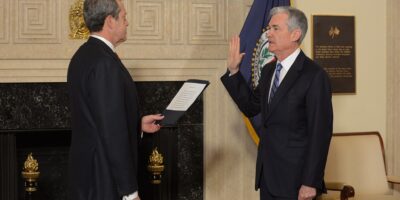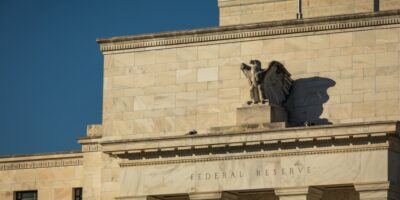Interest Rates, Funny Money, and Economic Malaise
Since the 2007–8 financial crisis, more and more economists have entertained the idea that there might be some connection between artificially low interest rates and business cycles. By “artificially low” I mean interest rates that are pushed below their natural levels by expansionary monetary policy. The relationship between monetary policy and interest rates is tricky; beyond the immediate short run, it is hard to say whether liquidity effects (which tend to push down rates) or rising income effects (which tend to push up rates) dominate. But in the short run, to the extent that expansionary monetary policy is a surprise, there should be a fall in market interest rates that is not justified by economic fundamentals — namely, real saved resources available for investment projects.
The way the business cycle unfolds looks like this: The monetary authority injects new money into capital markets in an attempt to give the economy a shot in the arm. Investors see artificially low rates and increase their investments in projects that will pay out in the future. But households are not saving any more real resources. In fact, households will probably respond to low interest rates in the same way: the costs of reallocating purchasing power from future you to present you have fallen, so you are more likely to borrow to equalize your intertemporal marginal utility of consumption. With both consumers and investors using up more real resources in ways that are fundamentally at odds with each other’s plans, something’s got to give. The comovement of consumption and investment beyond the economy’s production possibility frontier is ultimately unsustainable. When everyone wakes up to the fact that the low interest rates were the result of funny money, rather than real economic forces, the bubble bursts. A costly recession follows, during which the economy has to sort out the viable from unviable projects going forward and reallocate resources accordingly. Eventually the economy will recover, but not before some real losses in the form of idle labor and capital.
Sometimes economists argue that this theory of the business cycle relies on consumers and investors being irrational. Why can’t they see that the low interest rates and attendant liquidity boosts are artificial? Why do they engage in fundamentally unsustainable behaviors if they know how this all plays out? There are several counter-arguments to this objection. The first is that “taking the money” — making the best of the low rates while you can — is a dominant strategy: no matter what everyone else does, you maximize your own welfare if you snatch up the cheap liquidity while you can.
The other makes use of the idea of survivability bias. Suppose investors and consumers guess right on average about the sustainability of production projects, no matter the stance of monetary policy. Expansionary policy lowers rates in the short run, which has the side effect of injecting noise into the price system. This will mean errors on both sides: some investors will use too much of the easy liquidity, engaging in unsustainable production. But some will err on the other side; they will not expand as much as they could. If this is the case, they are leaving dollars on the sidewalk, so to speak. But these errors do not result in business failure; they merely result in businesses making less money than they could. Because business failures are observable, but leaving money on the sidewalk is not, it appears as if investors as a whole have erred systematically. But this is just an artefact of how we observe and record businesses making a mistake. We don’t see all the times businesses could have done better not by expanding less, but by expanding more!
A final counter-argument emphasizes that the point at which wealth is destroyed is the artificial boom itself. Consumers and investors are not making systematic errors; they are simply rationally readjusting their intertemporal consumption streams (investment is just delayed consumption, after all) in response to the changed expected future course of interest rates. The bust is simply how the shrinked intertemporal budget constraint plays out over time. There are no errors in the economy; there is only misguided (wealth destroying) public policy, to which market agents respond as best they can.
Whatever the explanation, there is growing support for the idea that meddling with market interest rates is a bad idea. Interest rates are a crucial price in the economy: the price of time. Thus interest rates coordinate intertemporal production plans, and any attempt to alter them will entail undesirable unintended consequences. Monetary policy makers would do well to learn from the recent financial crisis: don’t tinker with relative prices!









